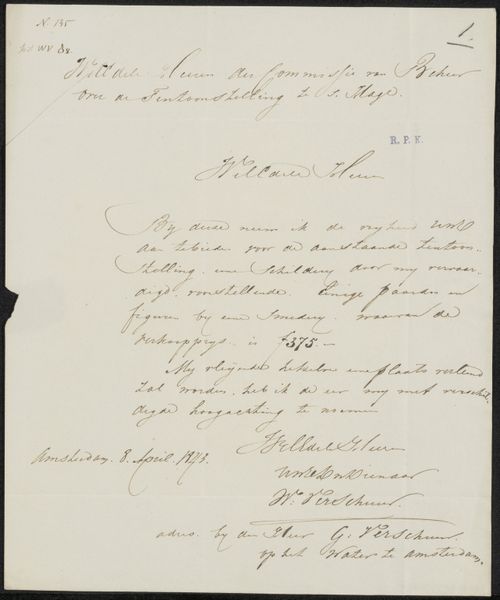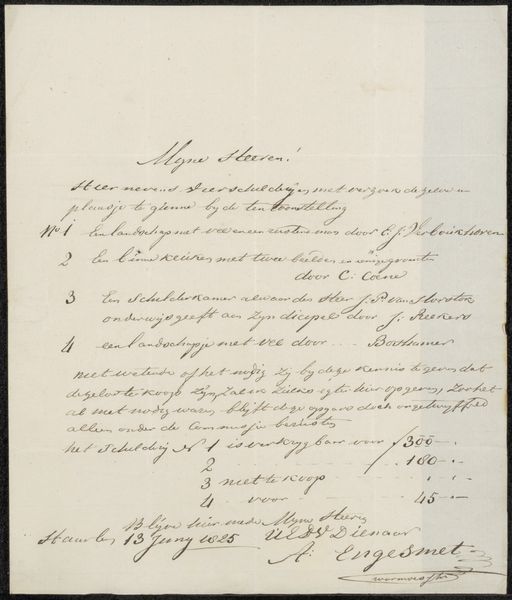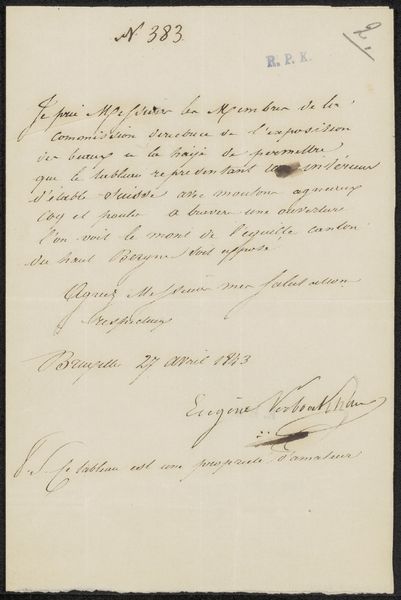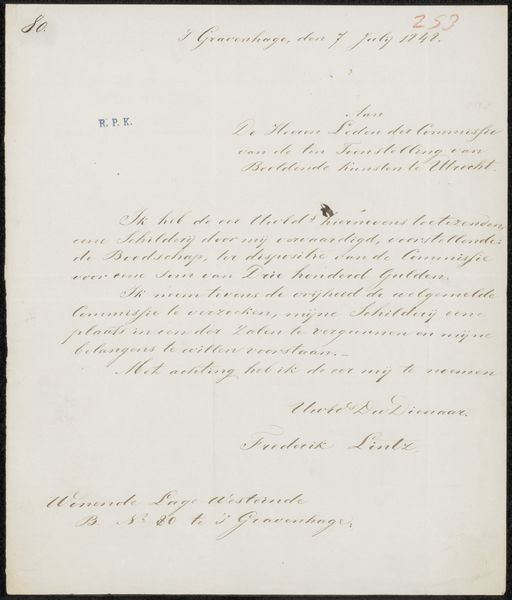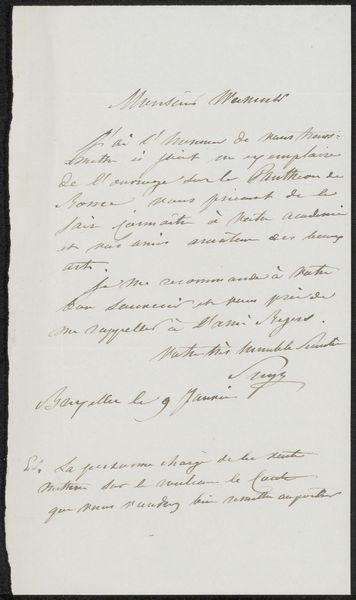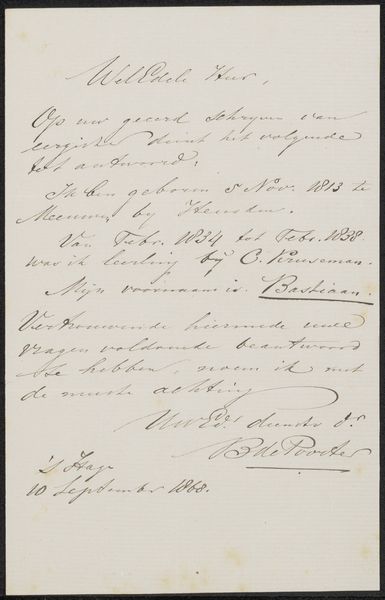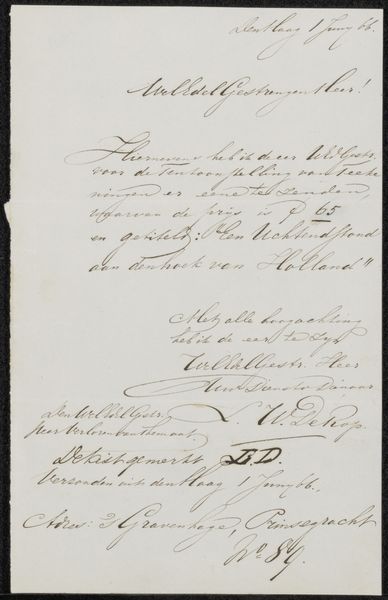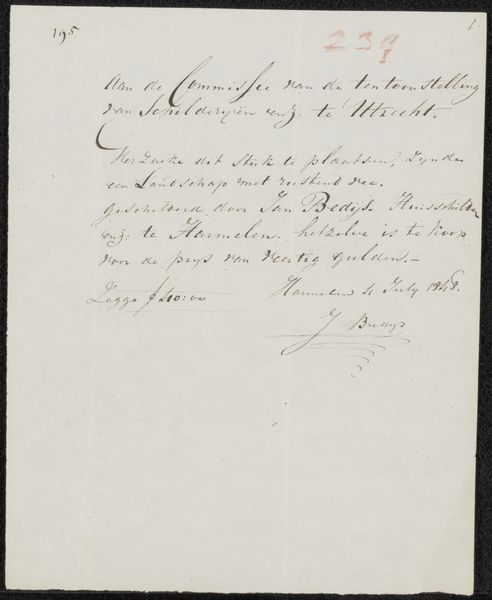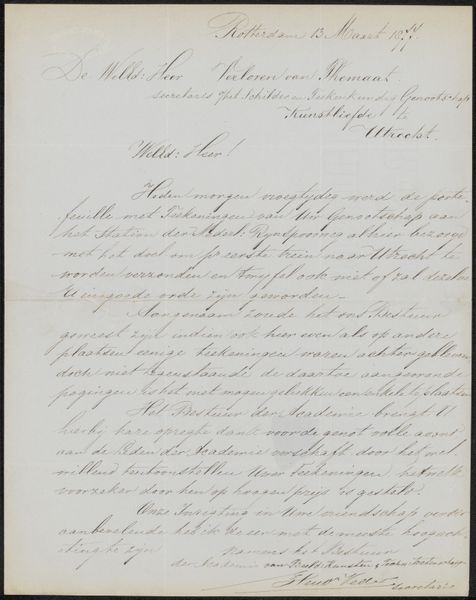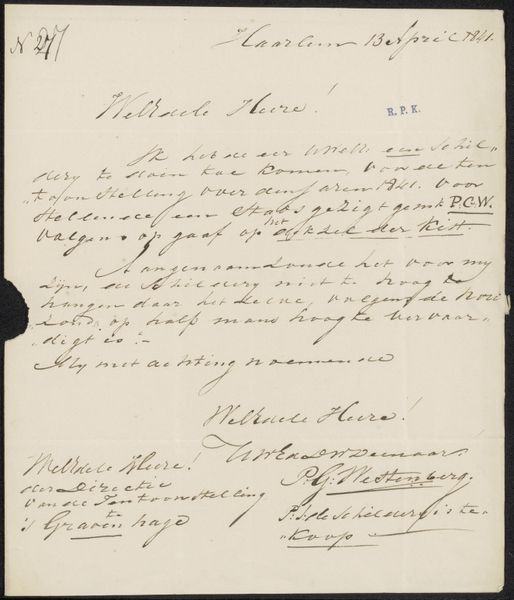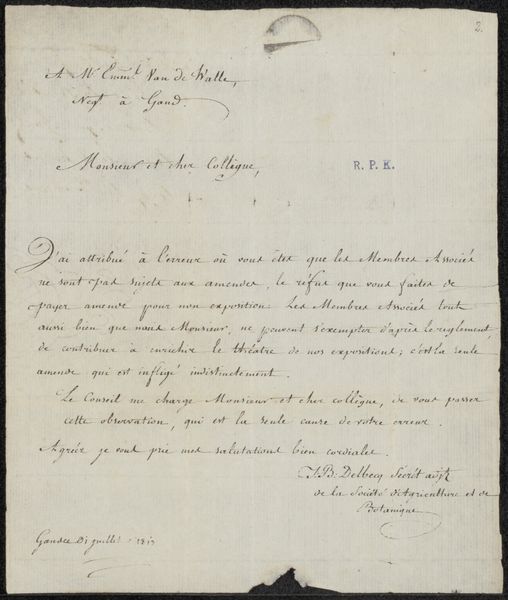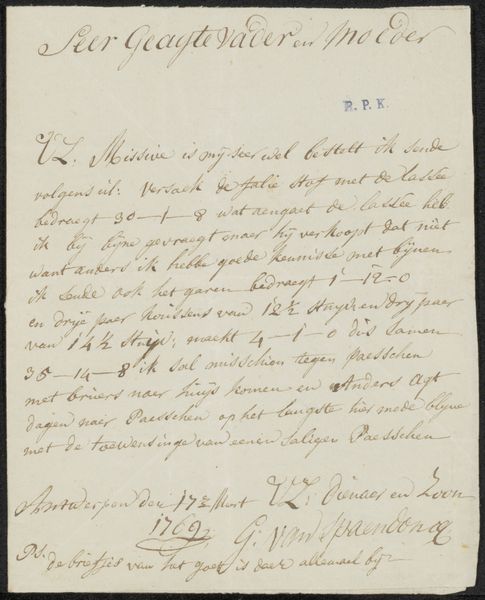
Brief aan de commissie van de Tentoonstelling van Levende Meesters in Utrecht Possibly 1848
0:00
0:00
drawing, textile, paper, ink
#
drawing
#
narrative-art
#
textile
#
paper
#
ink
#
intimism
#
history-painting
#
academic-art
Copyright: Rijks Museum: Open Domain
Editor: This is “Brief aan de commissie van de Tentoonstelling van Levende Meesters in Utrecht,” or "Letter to the commission of the Exhibition of Living Masters in Utrecht," possibly from 1848, by Jan Lodewijk Beijer, created with ink on paper. The cursive writing has a lovely rhythm, almost musical in its flow. What stands out to you as you look at this piece? Curator: The rhythm you observe is fascinating. Writing, especially in this era, held great significance. It was a deliberate act of communication but also performance. The specific curves and flourishes within the handwriting speak to the composer's personality, their aspirations to express not just information, but also an intentional appeal and presentation. Editor: So, you are saying handwriting is like an embedded portrait of the writer's intention? Curator: Precisely. Consider the labor involved – the dipping of the pen, the controlled pressure to create thick and thin strokes. It embodies academic discipline, communicating status but also appealing to cultural conventions. Letters like these act as symbols for artistic and cultural validation of a specific period. Note the formal language. It strives to adhere to particular societal codes that would signify the artistry, but even the economic considerations behind artistic practice in the period. Do you notice anything else about the use of language here? Editor: The formal tone seems to balance on a request, almost a plea. Were artists reliant on the "commission" structure to gain social acceptance at the time? Curator: Exactly. This dependence informed every stroke of the pen, investing each word with additional significance. It serves as a cultural memory of artistic patronage and artistic survival in this period. Editor: It’s fascinating to consider how such a simple piece of writing reveals so much about cultural conventions. Thanks for showing me the layers of intention embedded in it. Curator: My pleasure. It is by examining cultural continuity in art forms like these that we truly uncover history, memory and identity.
Comments
No comments
Be the first to comment and join the conversation on the ultimate creative platform.

